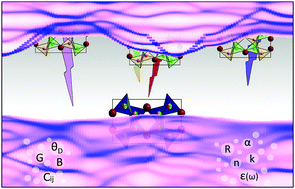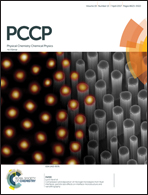First-principles and experimental characterization of the electronic properties of CaGaSiN3 and CaAlSiN3: the impact of chemical disorder†
Abstract
We report a detailed investigation of the electronic, mechanical and optical properties of the recently discovered nitridogallosilicate CaGaSiN3 which has potential as a LED-phosphor host material. We focus on chemical disorder effects, originating from the Ga/Si site, and compared them to those of isostructural CaAlSiN3. We calculate the elastic moduli and the Debye temperature in terms of quasi harmonical approximation. Spectral properties like the joint density of states (JDOS) are evaluated and the absorption, reflectance and energy loss function are obtained from the dielectric function. The optical band gap of CaGaSiN3 from experiment is compared to the electronic band gap in terms of electronic DOS and band structure calculations. All properties are evaluated for different ordering models of Ga/Si while the experimentally observed substitutional disorder is accounted for by utilizing the Coherent Potential Approximation (CPA). We conclude a shrinking of the band gap for both CaGaSiN3 and CaAlSiN3 due to atomic disorder, which is unfavorable for potential phosphor applications. This study contributes to materials design considerations, and provides a close look on the electronic impact of substitutional disorder. Moreover, we open the scope for future investigations on solid solutions and phosphor host materials with low doping concentrations.



 Please wait while we load your content...
Please wait while we load your content...